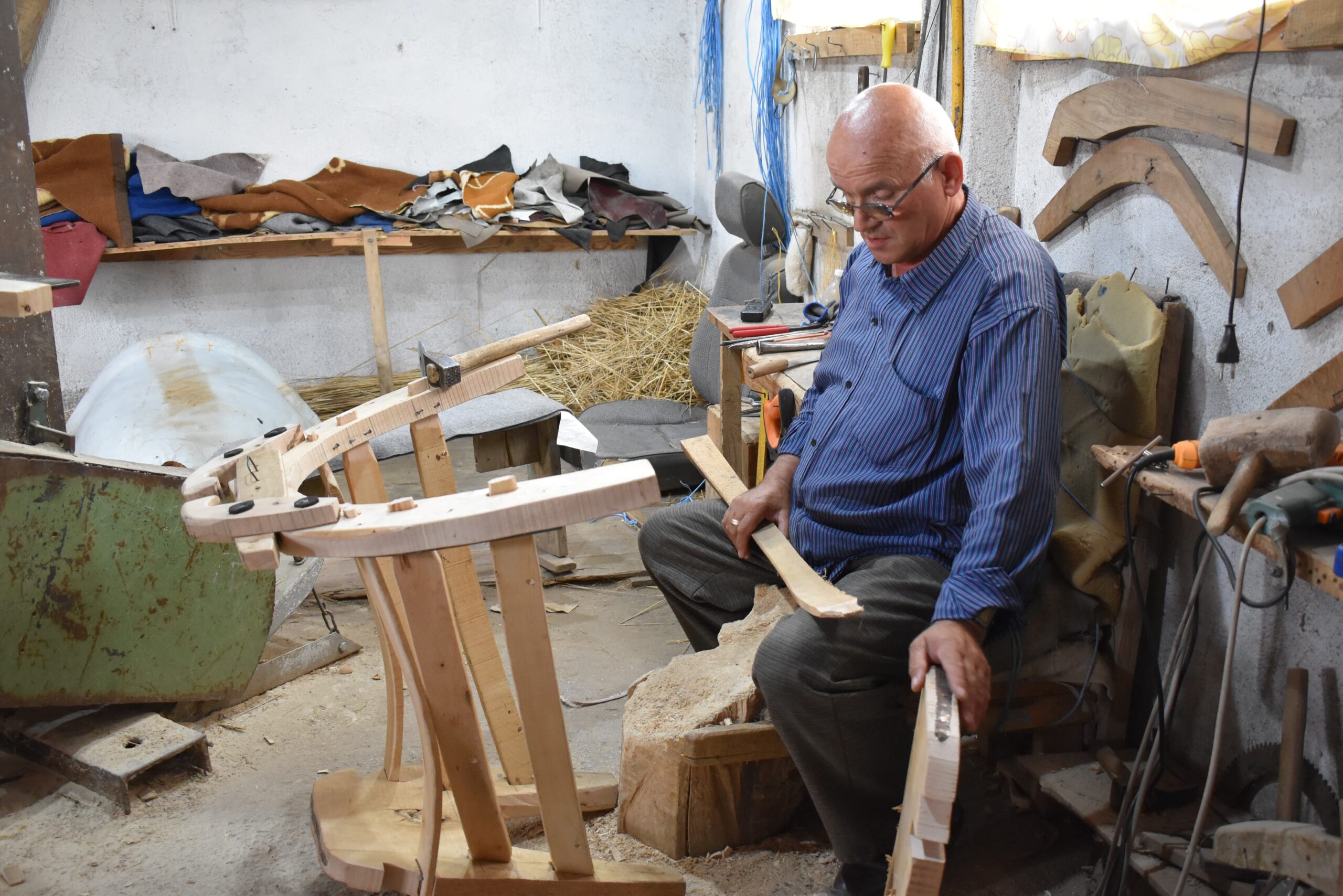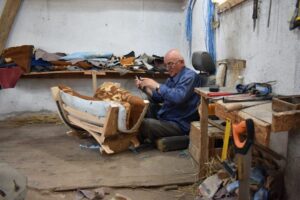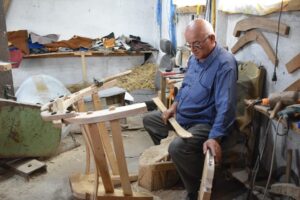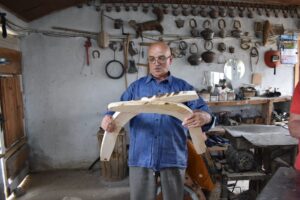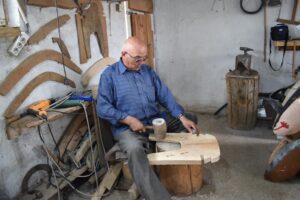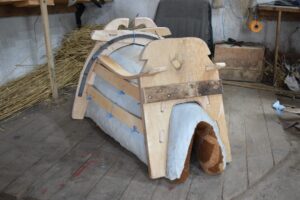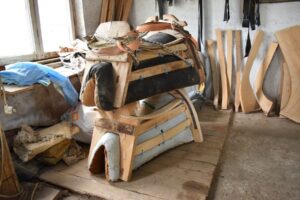The craft of saddler is generally passed through the family and is quite popular in the Korça district, as pack animals occupy a significant place in agricultural activity.
A saddler makes mainly: packsaddle, rear billets, girth, and headcollar.
• Making the packsaddle:
Packsaddle consists of two parts which saddlers call “pommel and cantle”. To make what is called the first one or pommel, a card template is used. It is put on the timber projected and drawn with a pencil. Timber may come in beech, poplar, willow, or elm wood with beech wood as the most preferred. Next, timber is sawn and treated as per the shape.
The timber is then drilled to fit the animal’s width and 6 holes are drilled on each side, showing a total of 12 holes in a pommel. Drilling is primarily carried out with a drill holding the timber at a fixed angle. The process continues with incising those holes with a gleta which is manipulated with a tokmak. Gleta is a flat pitching chisel, while tokmak is a wooden hammer-like mallet.
After the pommel is made, the next step is starting to make the cantle. This one is also made using a card template. The cantle is also made to fit the animal’s size. Based on the template, the kocaqet (saddle horn) is made. Once drilled, kocaqet pieces connect to each other forming what the saddler calls the cantle. Next, it is time to start building the packsaddle. The pommel and cantle are connected by means of dhoga (tree bars or slats). These bars are arched along certain sections following a card template. Once the pommel and the cantle have been drilled, bars are initially fixed onto the pommel. Sizing is performed by means of a wooden tool, which the saddlers call a kut (a measuring ell). The bars are sawn depending on the preset size. What comes next is aligning 6 bars, 3 on each side. The cantle is also reinforced with a metal rod, which is given an arched shape on the anvil. This is done to make the packsaddle more time resistant. Once the wood tree is made, the next step is making the stela (pad).
• Making the stela (saddle pad):
The saddle pad is made of thin leather or other pieces of cloth such as bedcovers, umbrella sheets, etc. Sizing is again performed using a measuring ell. It is marked and cut with scissors. Next, it is tightly stitched with twine while the seamstress wears a typical thimble, to prevent fingers from being pricked while sewing. Further, some rye straw is stuffed into the pad and stitched. A piece of thin leather is fixed over the pad and attached to it. Next, the pad available for use is inserted into the wood tree and fixed with waxed thread (stitching to accommodate it to the packsaddle structure). It is fixed along 5-6 points.
• Making the palldëmi (rear billets):
The rear billets are made with thick ox or cow leather depending on the previously taken sizing with a measuring ell.
The rear billets are made by cutting two pieces of leather which are brought together by gluing and stitching. The rear billets are fixed at the back of the packsaddle.
• Making the qengëlë (girth):
It is made from thick leather, with pieces attached by gluing. It is a type of band, fastened around the animal’s belly to keep the saddle in place.
• Making the kapistalli (headcollar):
Headcollar or halter is usually made of leather with a noose or headstall fitted around the animal’s muzzle. This strap is trimmed at the noseband to shape it properly.
A packsaddle takes 5 years to repair or to start making afresh, hence the working frequency depends on the relevant requirements.

